Track safety violations on construction sites with AI video analytics, ensuring PPE compliance, zone safety, and audit-ready reporting.
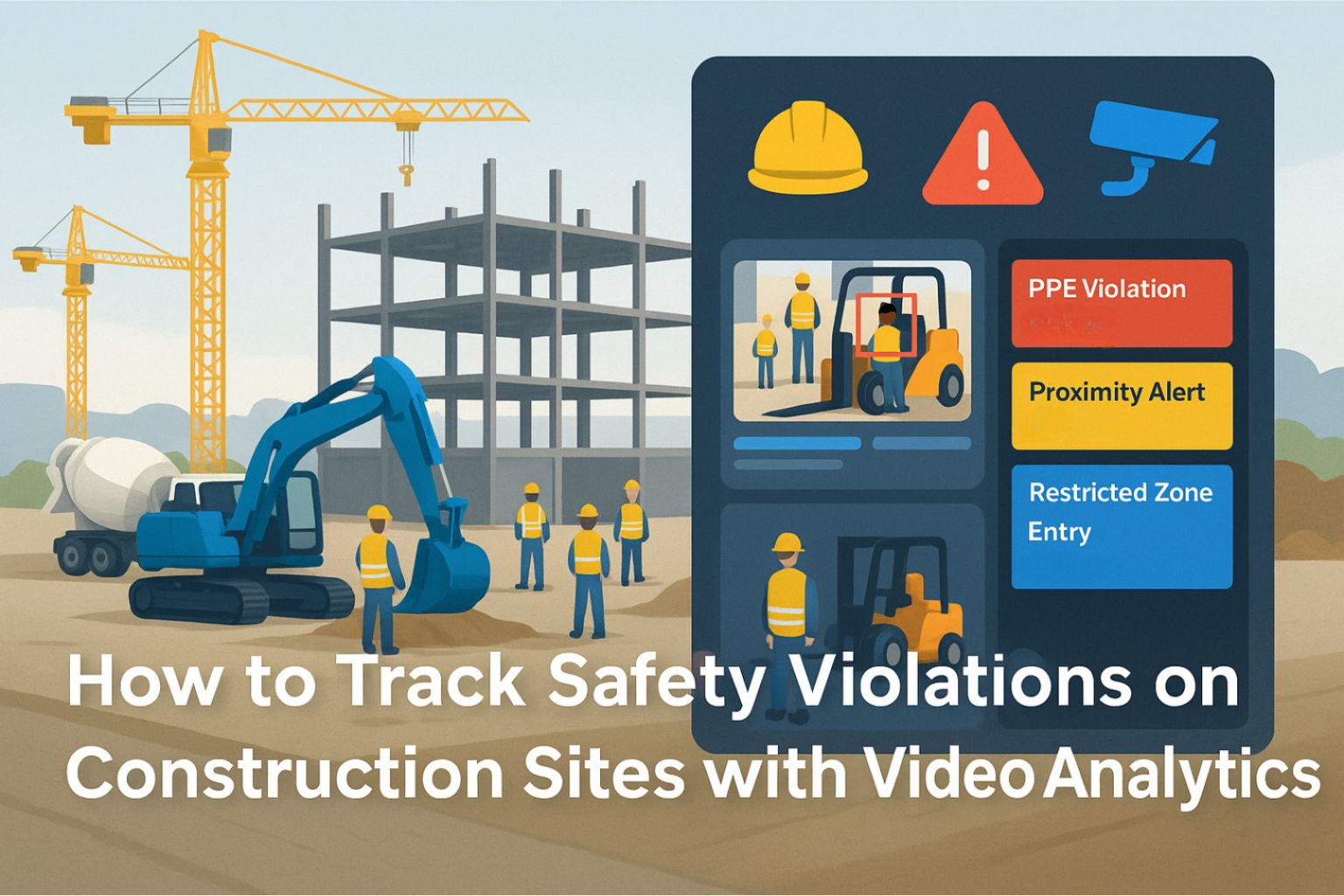
Construction is one of the most high-risk industries anywhere in the world. Even with detailed safety regulations and trained supervisors on site, hazards are difficult to eliminate. Heavy machinery, constantly shifting work areas, and a mix of subcontractors all create conditions where accidents can and do occur. For leaders responsible for project delivery and workforce safety, the pressing question has become how to track safety violations on construction sites with video analytics.
In 2025, video analytics powered by artificial intelligence will no longer be experimental. It is now a practical, deployable solution that helps construction firms achieve real-time safety monitoring without relying only on human patrols. This article explains why proactive safety tracking matters, what video analytics means in practice, the types of violations it can detect, and how to implement it step by step. It also highlights common mistakes to avoid, provides a framework for evaluating vendors, and offers guidance on how to calculate a realistic return on investment.

Manual safety patrols have long been considered the frontline defence against accidents. Supervisors or safety officers walk through active sites to check that workers are wearing proper protective equipment, staying within assigned areas, and operating machinery safely. While these patrols are essential, they are inherently limited in several ways.
First, the financial and human cost of accidents is simply too high for reactive measures to be sufficient. Globally, construction consistently accounts for a large share of workplace fatalities, and the consequences of serious incidents include fines, medical costs, delays, and premium increases. In Singapore, the Ministry of Manpower reported a workplace fatality rate of 1.2 per 100,000 workers in 2024, with construction contributing a significant portion of the stats. Each major accident brings substantial financial consequences that can easily reach tens of thousands of dollars for a single event.
Second, inconsistent coverage makes manual patrols unreliable as the sole method of monitoring. A supervisor may walk a site every two hours, but incidents often occur in the minutes between checks. A worker may remove a helmet for a short period or step briefly into a restricted zone. Unless these moments are captured by technology or observed by chance, they go unreported.
Third, there is the risk of human error. Even the most diligent officer cannot watch every worker in every zone simultaneously. Fatigue, distraction, or poor visibility can cause violations to be overlooked. In high-noise, dusty, or dimly lit environments, these challenges only increase.
Video analytics addresses these gaps because it provides continuous, automated monitoring. Instead of spot checks, cameras equipped with AI watch active areas at once and raise alerts the moment a violation occurs.
Traditional CCTV systems are passive. They record footage for later review, which helps with post-incident investigations but does little to prevent accidents in the moment. Supervisors must physically watch feeds, which is impractical on large projects.
Video analytics transforms cameras into active sentinels. AI models trained on extensive visual data recognise patterns that correspond to safety violations, then flag issues in real time. The key difference is that the system identifies issues automatically and raises alerts within seconds. That allows supervisors to intervene earlier, which prevents incidents before they escalate.
This is not theoretical. Invigilo’s SafeKey is presented as a workplace safety video analytics platform that integrates directly with a site’s existing camera network, issues instant alerts via WhatsApp, Microsoft Teams, or SMS, and logs every event in a centralised dashboard that supports trend analysis and audit trails. These capabilities are detailed on Invigilo’s product page and in their forklift safety guide. These capabilities matter because they remove friction from day-to-day operations. Supervisors continue using familiar channels while the system captures evidence for compliance.

Modern video analytics can track several high-impact categories of safety violations. These detections are not abstract. Each addresses recurring, preventable risks on construction sites. Invigilo outlines these capabilities across its product page and in its forklift safety guide.
Personal protective equipment is the foundation of construction safety. Helmets and high-visibility vests, in particular, are common compliance requirements. Invigilo states that SafeKey monitors more than 50 safety risks and explicitly references PPE non-compliance as a supported category. By flagging missing PPE, supervisors can intervene before incidents occur, which reduces the likelihood of fines and improves worker protection.
Heavy equipment such as cranes, excavators, and forklifts presents one of the greatest risks on site. Workers stepping too close to moving machinery risk serious injury. Invigilo materials explicitly list proximity hazards as a supported detection category, with real-time alerts and centralised logging. That allows teams to define safe working envelopes and receive notifications when people encroach.
Construction sites frequently contain areas where only authorised personnel should enter, such as scaffolding zones, lifting paths, or excavation pits. Invigilo’s content references detecting restricted-zone breaches and retaining audit evidence in the dashboard. Digital geofences and dwell-time logic help prevent silent, incremental risk build-ups around critical operations.
Some third-party pages suggest slip, trip, or fall detection in general AI safety contexts. Invigilo’s core site and product page do not explicitly list fall detection as a live feature. Therefore, this article does not claim it. If you intend to include it in the future, please confirm availability with Invigilo first.
For buyers, reliability is crucial. In construction, this is not an abstract concern because alert quality determines whether teams trust the system.
Well-trained models can achieve high accuracy for PPE detection and proximity alerts when cameras have a clear field of view and lighting is adequate. Performance drops when cameras are mis-positioned, occlusions are common, or lighting changes rapidly. You will improve accuracy significantly if you plan coverage and camera selection at the start of a deployment.
Latency is the delay between an event and the alert. If alerts arrive several seconds late, the window to intervene may close. Invigilo highlights that SafeKey integrates directly with existing networks and issues instant notifications via WhatsApp, Microsoft Teams, or SMS, which reflects a design prioritised for low-latency alerting. These capabilities are described on the product page and in Invigilo’s oil and gas guide. Running analytics close to the camera network and pushing alerts into communication channels teams already use helps ensure that supervisors can act immediately.
False positives must be managed deliberately
False positives are inevitable in any perception system. Camera placement, field of view, and reflective surfaces can all cause misclassification. The fix is both technical and operational. Technically, you should tune confidence thresholds and refine detection zones. Operationally, you should set up simple review workflows so supervisors can validate alerts quickly. Invigilo also emphasises creating a repeatable feedback loop that refines detections over time, as explained in their safety culture update.
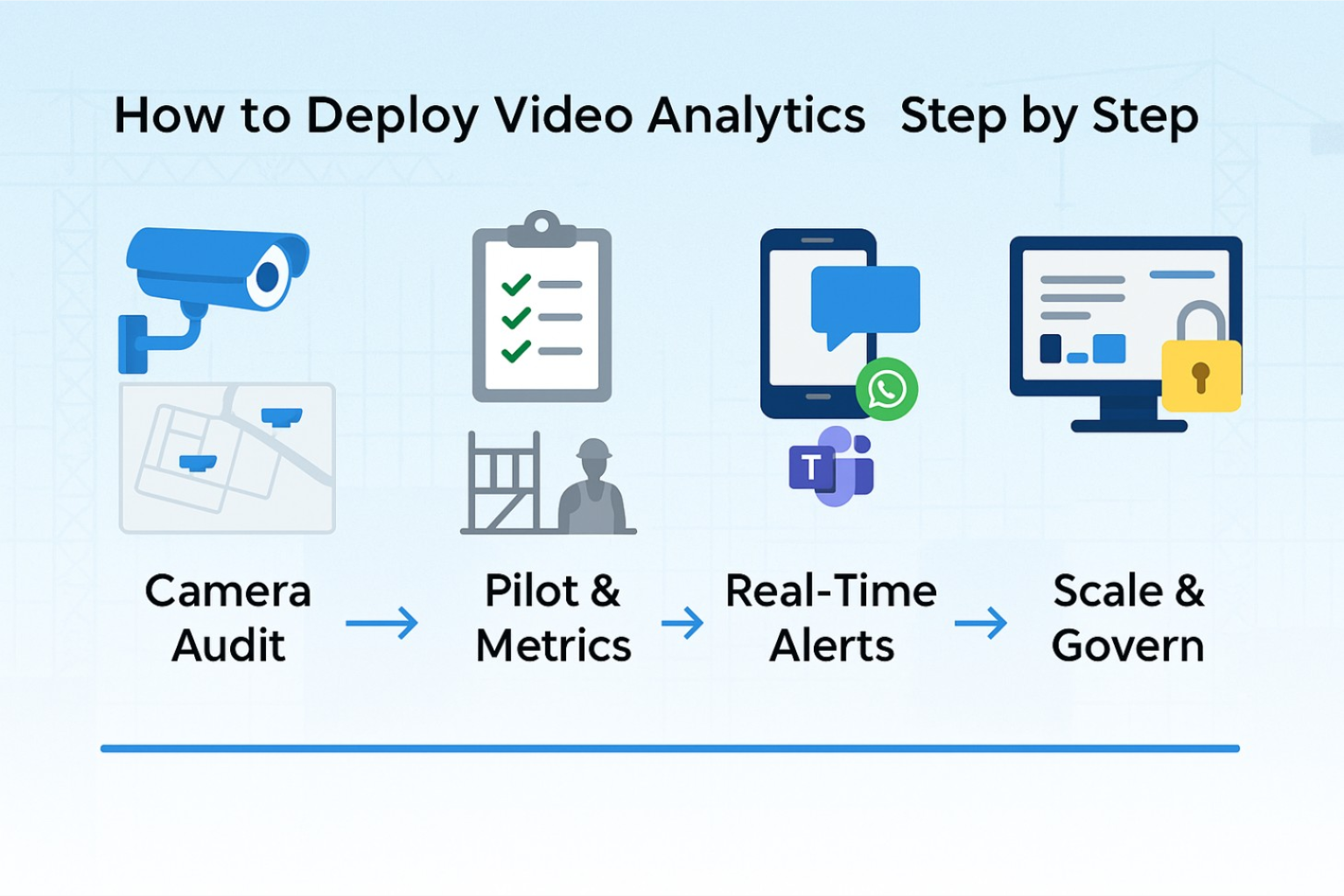
Deploying AI-powered video analytics does not need to be disruptive, although success depends on careful planning. A phased approach secures buy-in and ensures early wins.
Review existing CCTV to confirm field of view, mounting height, lens type, and lighting. Eliminate blind spots and reduce occlusion around critical activities such as lifting paths and vehicle corridors. This step not only improves detection accuracy, it also builds a shared understanding between safety and site teams about where risk is concentrated.
Start with one representative site. Define success metrics that relate to business outcomes, such as a percentage reduction in PPE violations, fewer proximity breaches during certain operations, or faster incident response. Invigilo positions SafeKey as a system that connects to existing CCTV and monitors more than 50 safety risks with a centralised audit trail and heatmaps, making it well-suited to a pilot-first approach. These capabilities are outlined on the product page and in Invigilo’s forklift safety guide.
Analytics are only useful when supervisors receive alerts where they can act. Invigilo supports real-time notifications through WhatsApp, Microsoft Teams, and SMS, with every event captured in a dashboard for trend analysis and audits. This ensures teams benefit without needing to adopt entirely new tools. See the product page and forklift safety guide for more details on how alerts are routed and logged.
Once the pilot shows value, expand coverage. At this stage, establish clear governance around who can view, export, and retain footage. Invigilo’s materials reference a centralised dashboard and audit trail, so configure retention, export, and access controls to align with company policy and local regulations. These governance features are described on the product page. Privacy signage and worker briefings are critical for trust and compliance as the system scales.
Catching violations is only half the battle. The bigger advantage comes from turning alerts into structured workflows and evidence.
Assign zones to specific supervisors and route alerts accordingly. That reduces confusion and ensures each notification has a clear owner.
Invigilo’s dashboard logs every event with timestamps and retained context, so you can review, trend, and demonstrate improvement over time. The company’s own content highlights a centralised audit trail with heatmaps and compliance trends, which are exactly the artefacts auditors ask for. These capabilities are described on Invigilo’s product page and reinforced in resources such as the forklift safety guide.
Use weekly exception reviews to identify repeat hazards, high-risk zones, and training needs. When patterns emerge, you can adjust layout, scheduling, or procedures. Over time, this closes the gap between alerting and behaviour change.
If you want to see how these components come together in practice, you can explore Invigilo’s overview of SafeKey to see how it integrates with existing CCTV, issues instant alerts via the channels your teams already use, and consolidates evidence in one place. You can also review a practical deployment article that describes detection-to-alert workflows and dashboard logging in more detail.
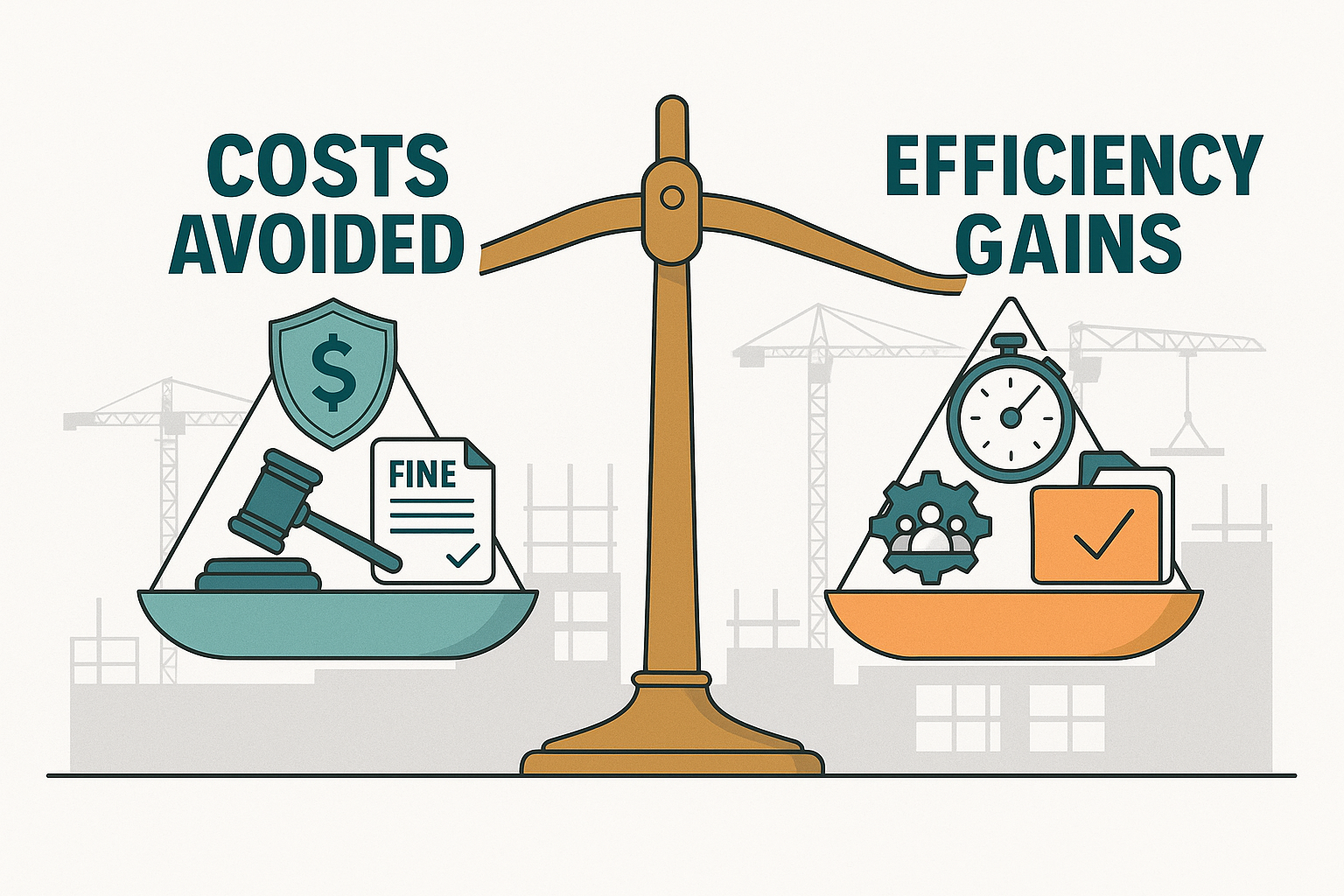
Cost justification is one of the most important questions buyers ask. Video analytics is not free, although the investment often pays for itself when you add up avoided incidents, fewer fines, and time saved.
Preventing a single serious incident can save tens of thousands of dollars. As a benchmark, the U.S. Occupational Safety and Health Administration documents that the average lost-time injury can cost between $30,000 and $60,000 when medical expenses, compensation, and productivity losses are included. That is a conservative frame because the reputational and schedule impacts often extend the cost further.
In Singapore, safety violations can attract fines that range into the thousands, depending on severity. A system that reduces violations lowers this risk. In parallel, insurers increasingly consider continuous monitoring in risk assessments and may be more flexible when companies can produce clear, timestamped evidence for disputes and claims.
Manual patrols absorb significant time on large sites. When a system monitors routine compliance 24/7 and sends targeted alerts, safety officers can spend time on higher-value activities such as training, toolbox talks, and root-cause investigations. That is not about replacing people; it is about using expertise where it has the most impact.
Video evidence helps resolve disputes, supports incident investigations, and reassures clients that robust controls are in place. Those downstream benefits are harder to quantify; however, they contribute to a stronger compliance posture and smoother audits.
Video analytics should complement, not replace, your safety management system. Retain toolbox talks, physical barriers, and supervision. Use analytics to catch what humans cannot see consistently.
Poor camera angles and weak lighting create blind spots and false positives. Address this with a coverage audit before switching detections on. A small repositioning can unlock a large accuracy gain.
Workers and supervisors must understand how alerts are used, how footage is stored, and what the rules are. Brief the team, post clear signage, and provide feedback so people see that alerts drive improvement rather than punishment.
Without clear pass and fail gates, pilots drift, and credibility suffers. Decide your baseline and your target before go-live, for example, reduce unhelmeted entries by a defined percentage on a defined zone during a defined shift.
Selecting the right solution requires a clear framework that goes beyond demo optics.
Confirm the system reliably detects PPE non-compliance, unsafe proximity, and restricted-zone entry in conditions that resemble your site. Invigilo explicitly cites PPE and proximity hazards among more than 50 supported risk detection methods.
Look for solutions that connect to your current CCTV and video management system so you avoid unnecessary hardware swaps. Invigilo positions SafeKey as integrating directly into your existing camera network and issuing real-time notifications via WhatsApp, Teams, or SMS.
Check that the platform logs events with timestamps and retained context, then confirm which export formats are available. Invigilo references a centralised dashboard with an audit trail, heatmaps, and compliance trends, which are the artefacts auditors request.
Require role-based access control, encryption in transit and at rest, and configurable retention periods. Align configuration with your company policy and local regulations, and post clear signage.
Favour a vendor that can run a pilot with clear goals, provide responsive support, and update models as site conditions change.
Adopting new technology can feel daunting; however, the path forward is straightforward.
Start with one representative site and set measurable objectives. Decide whether your priority is reducing PPE violations, improving response times for proximity breaches, or building a trustworthy audit trail. Train supervisors to interpret alerts and act on them quickly. Monitor results, share outcomes, and adjust camera placement or detection zones as needed. When early wins are visible, scale deliberately to similar sites.
If you want a concise starting point, you can review Invigilo’s SafeKey overview and a practical guide that demonstrates how alerts, channels, and dashboards fit together in day-to-day operations.
Q: Can every type of safety violation be detected by video analytics?
A: No. The most reliable categories today are PPE non-compliance, unsafe proximity, and restricted-zone breaches. Other detections may exist in the market; however, availability and performance vary by vendor and site conditions. Invigilo’s core materials emphasise PPE and proximity in their supported risk set.
Q: Does video analytics replace manual safety patrols?
A: Not entirely. Patrols remain important for context and judgment. Video analytics reduces the need for repetitive checks and ensures officers focus on complex issues that benefit from human expertise.
Q: How quickly can a construction site go live with video analytics?
A: Timelines depend on camera readiness and network access. Because Invigilo connects to existing CCTV and uses familiar alert channels, pilots can be stood up faster than rip-and-replace projects.
Q: What about worker privacy and regulatory compliance?
A: You should configure access controls and retention settings to align with policy and law, and post clear signage. The advantage of a centralised dashboard and audit trail is that you can demonstrate discipline around who accessed what and when.
Safety is no longer only a regulatory requirement. It is a business differentiator that influences client trust, insurance conversations, and workforce confidence. Video analytics does not eliminate the need for human judgment, although it equips supervisors with continuous, objective monitoring and evidence. For construction leaders, the question is not whether to adopt these tools; it is how to deploy them effectively.
If you are evaluating options, you can learn more about Invigilo’s SafeKey and how it integrates with existing CCTV, sends real-time alerts via WhatsApp or Teams, and centralises audit evidence. You can also review a practical implementation article that shows detections, alert routing, and dashboard logging in context.
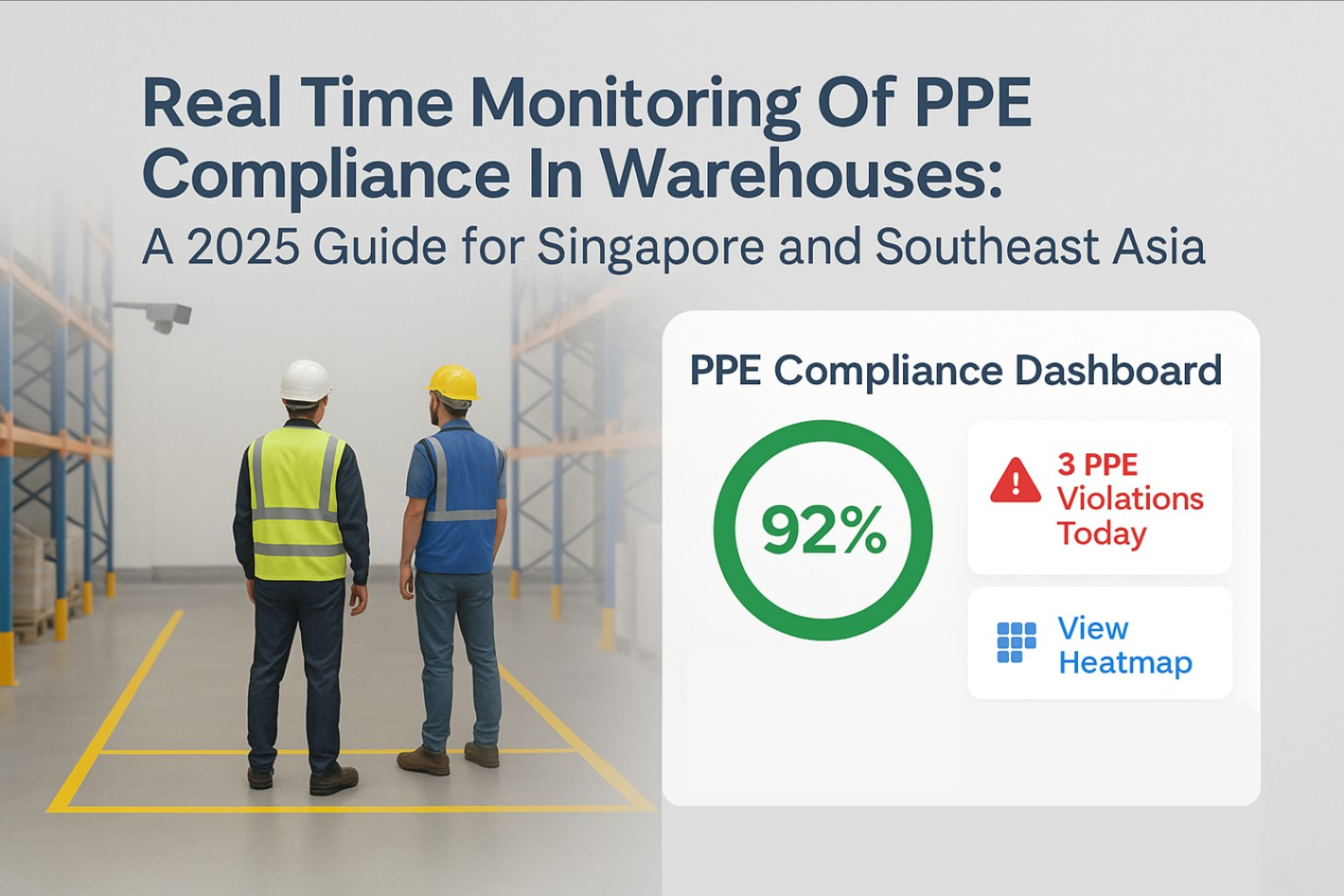
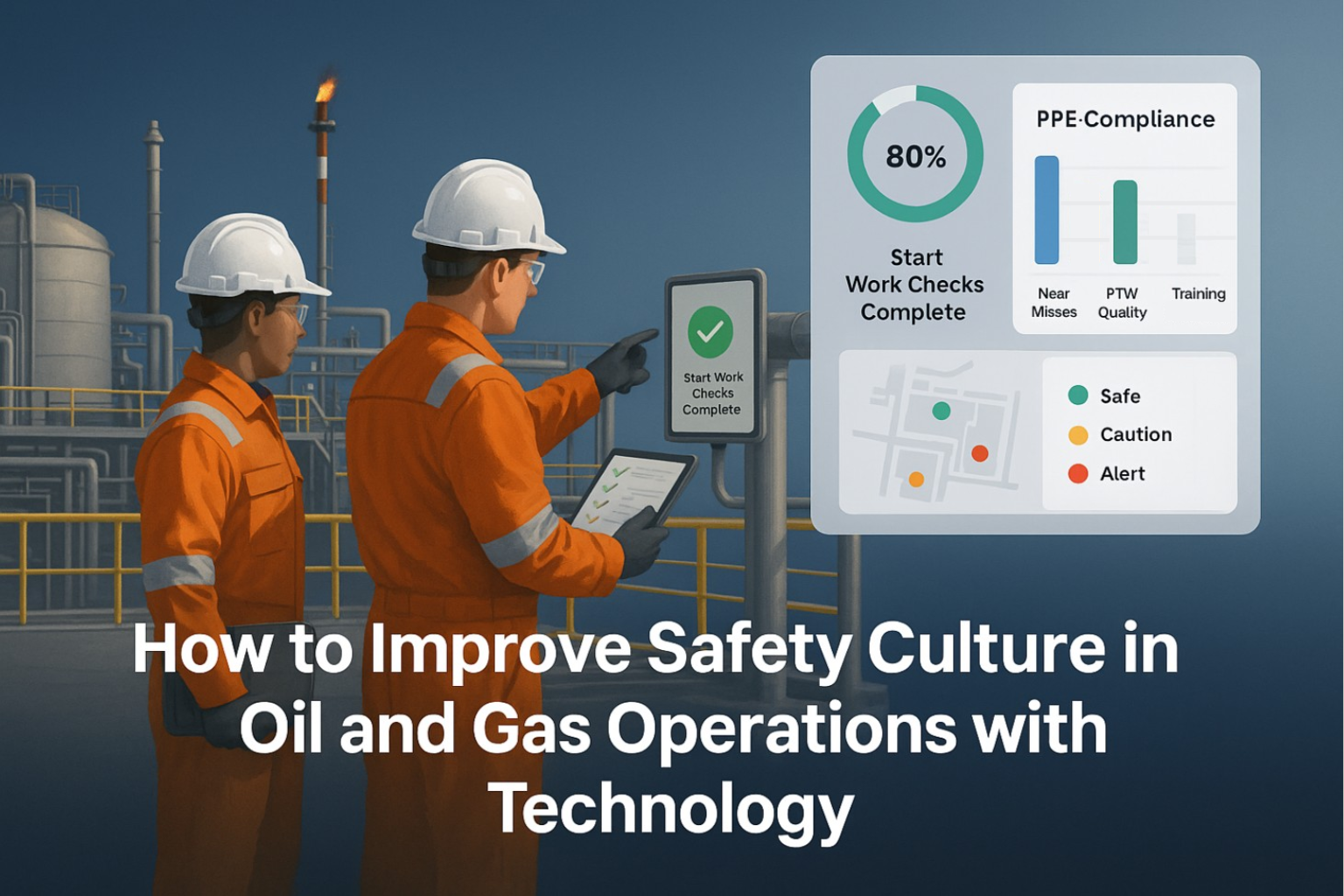
A practical playbook that turns safety culture into repeatable behaviours. Pair IOGP Life-Saving Rules and Start Work Checks with AI vision on existing cameras, digital PTW, LoRaWAN sensors and digital twins; track a small set of leading indicators, run a four-week pilot, and scale with privacy-first governance.

Learn how to build a weekly safety dashboard from systems you already have, then layer AI video analytics on existing CCTV to quantify PPE and proximity risks by shift and zone. The article covers schema design, data contracts, quality checks, a practical pilot plan, and how to link improvements to reduced claims, downtime and penalties. Templates for ISO 45001 or OSHA exports and vendor validation steps are included.
Ready to elevate safety in your operations? Let’s talk!
Contact us today for a personalized demo.
